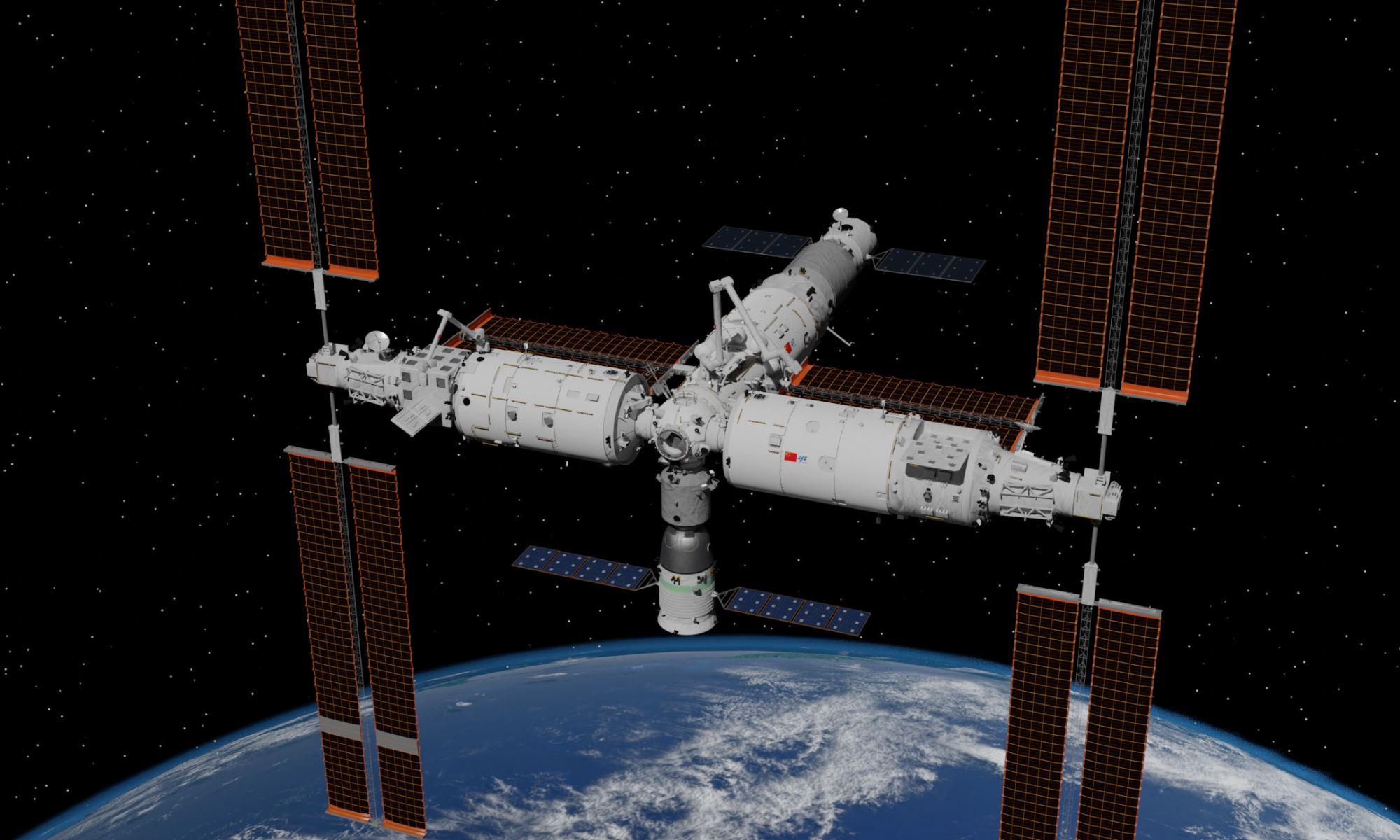The International Space Station (ISS) will be retired in 2030 after more than thirty-two years of continuous service. Naturally, there are questions regarding what will replace this station, which has served as a bastion for vital research and inter-agency cooperation in space. In the past, China has indicated that their Tiangong (“heavenly palace”) space station will be a successor and rival to the ISS, offering astronauts from other nations an alternative platform to conduct research in Low Earth Orbit (LEO). As part of this plan, China recently announced plans to double the size of Tiangong in the coming years.
This announcement was shared last Wednesday, October 4th, during the 74th International Astronautical Congress (IAC 2023) in Baku, Azerbaijan. According to the China Academy of Space Technology (CAST), three new modules will be added to Tiangong, which currently consists of the Tianhe Core Cabin Module (CMM) and two Laboratory Cabin Modules (LCM) – Wenhian (“Quest for the Heavens”) and Mengtian (“Dreaming of the Heavens”). This expansion will be accompanied by extending the station’s operational lifetime.
According to the statement made by CAST, Tiangong will be in service for more than fifteen years, ten more years than previously announced. This means that China intends to keep Tiangong operational until 2037 or later, several years after the ISS is decommissioned and deorbited. As of the penning of this article, the station has been fully operational since late 2022 (a total of 894 days) and has been occupied for the past 764 days. The station has hosted fifteen taikonauts (a maximum of three at a time) at orbital altitudes of 340 to 450 km (210 and 280 mi).

Once the additional three modules are added, the station will weigh 180 metric tons (198 US tons), which is still just 40% of the mass of the ISS. Nevertheless, the upgraded Tiangong will reportedly be able to accommodate a maximum crew of 6, falling just shy of the ISS’s current crew capacity of 7. These plans are consistent with China’s repeated statements that they intend to become a “major power” in this century that will rival NASA and other major space agencies. Last year, Chinese state media said that “several countries” had asked to send their astronauts to the Chinese station.
“The subject of Tiangong was one of two Global Networking Forums hosted by the Chinese Society of Astronautics (CSA) at IAC 2023, which included “International Cooperation on China’s Space Station” and “The International Lunar Research Station” (ILRS). The ILRS, a collaborative effort between China and Roscosmos (Russia), also represents China’s desire to become a superpower in space. When it was first announced in June 2021, China indicated that the ILRS would rival the Artemis Program and hinted that the decision was in direct response to NASA’s Artemis Accords.
China is currently looking for international partners for both projects. Unfortunately, China’s attempts to enlist other countries to join the Tiangong program suffered a slight setback when the European Space Agency (ESA) announced earlier this year that it would not participate. The ESA has been in talks with China for years and expressed interest in sending European astronauts to Tiangong. However, in January, ESA Director General Josef Aschbacher stated the following during an annual press briefing in Paris:
“We are very busy supporting and ensuring our commitments and activities on the International Space Station where we have a number of international partners working together. For the moment we have neither the budgetary nor the political, let’s say, green light or intention to engage in a second space station; that is participating on the Chinese space station.”

In response, the Global Times (a Chinese state-controlled media outlet) quoted adjunct professor and military analyst Song Zhongping, who stated that the decision resulted from “Europe being increasingly kidnapped by the US amid the ongoing and prolonged Russia-Ukraine conflict.” Song added that the ESA’s decision to give up on many years of “cooperation with China in the manned space domain is clearly short-sighted, which reveals that the US-led camp confrontation has led to a new space race.”
Space race would be an accurate term since China has followed a policy of rivaling NASA since it was isolated from the ISS program and banned from collaborating with NASA. Tiangong has become a symbol of this new race, and China hopes it will fill the void left by the ISS and become the new platform where lucrative space research will take place. Russia, meanwhile, announced similar plans to build a successor station consisting of six modules that could accommodate up to four cosmonauts. They also extended an invitation to its partners in the BRICS group (Brazil, India, China, and South Africa) to contribute a module to this station.
Further Reading: Reuters

